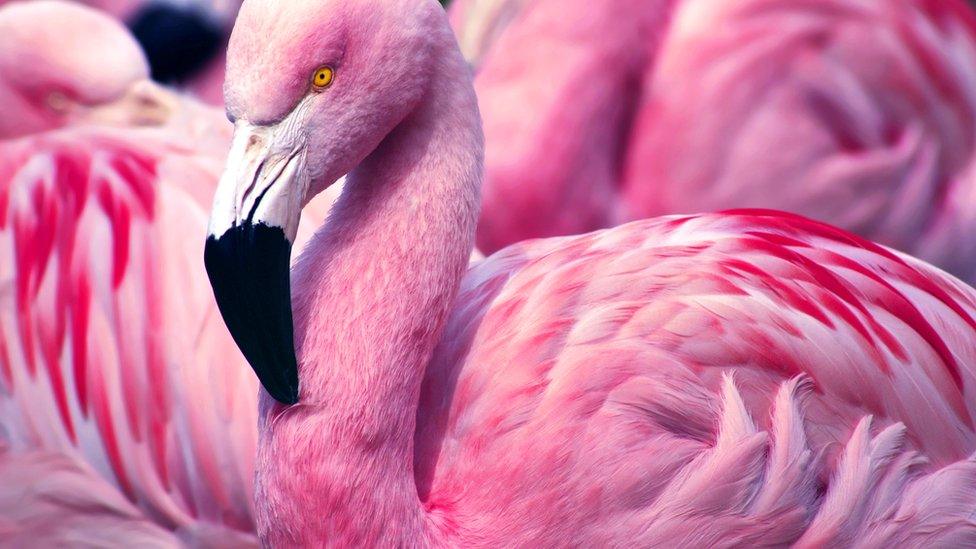Why are flamingos pink?
- Published

Have you ever heard the expression "you are what you eat"? Well, flamingos are just that. They get their reddish-pink colour from special colouring chemicals called pigments found in the algae and invertebrates that they eat. The same effect is seen when shrimps change their colour during cooking.
But flamingos aren't actually born pink. They are grey or white, and turn pink over the first couple of years of their lives. The word 'flamingo' comes from the Latin word 'flamenco' which means fire, and refers to the bright colour of the birds' feathers.
However, there was an amazing black flamingo spotted in Cyprus. It is thought it had a condition which affected the colour of its plumage.
How sweet is this lesser flamingo chick?!
Greater flamingos are the tallest species of flamingo. They have paler feathers and pink bills. Lesser flamingos are the smallest and most common. They live mostly in Africa, but can be found as far from here as Spain and Afghanistan.
Did you know that flamingos live for quite a long time - about 20 to 30 years in the wild, or up to 50 years if they are in a zoo. One greater flamingo at a zoo in Australia lived to be 83!
They are also filter feeders. This means that they take up water in their beaks and sieve out tiny brine shrimps from the water with their special beaks and tongue.
Even though it looks like they can, flamingos cannot bend their knee backwards! What you're actually looking at is their ankles. They're just a lot higher up their leg than you might expect. It uses less energy for a flamingo to stand on one leg than on two legs, which is why they can perform such an amazing balancing act when having a snooze!
Most flamingos prefer to rest their head to the right. The ones that prefer to rest their heads on the other side are more likely to be involved in violent clashes with other birds.
- Published18 August 2017
- Published10 April 2015
- Published17 June 2015
